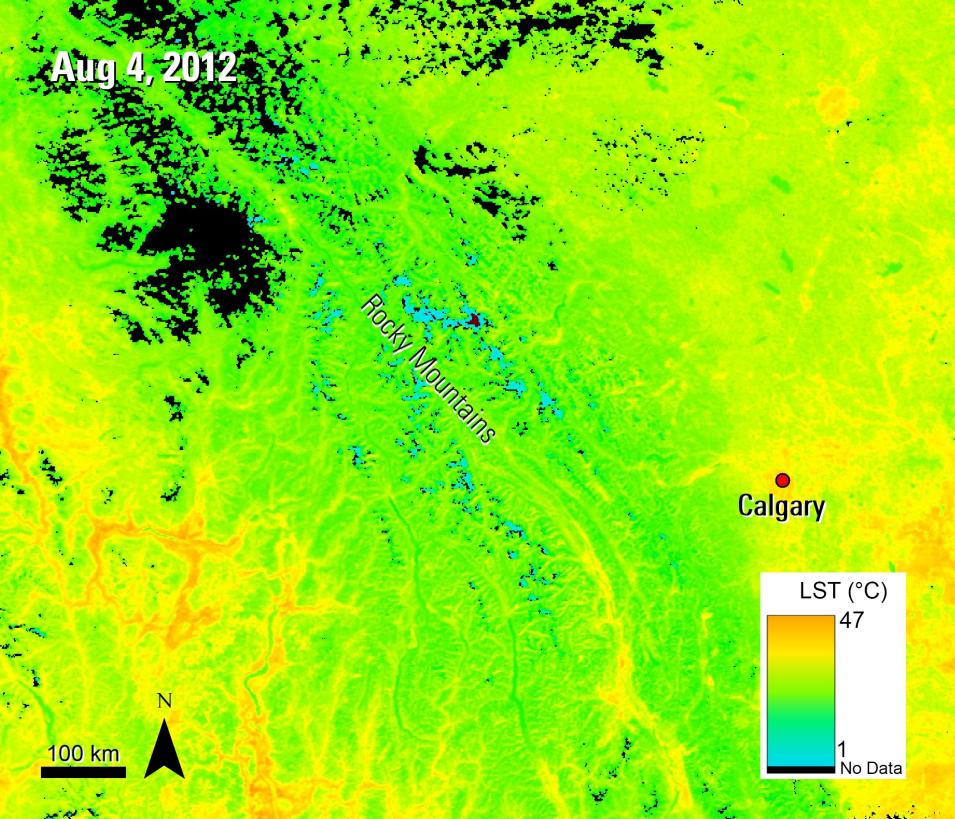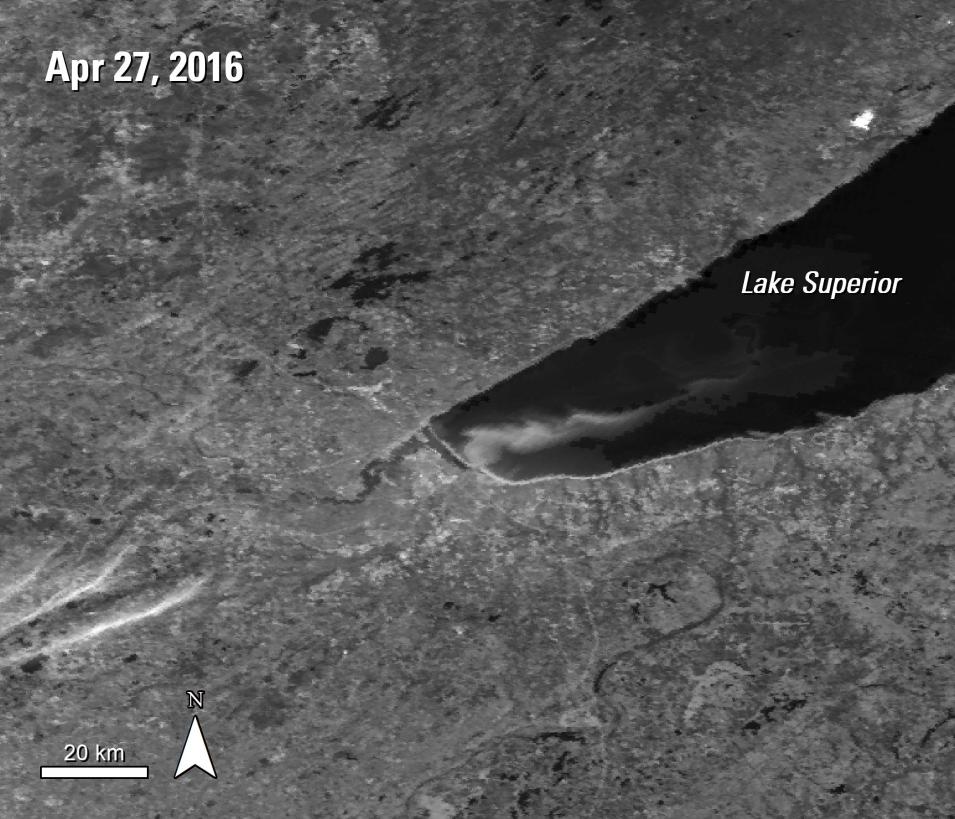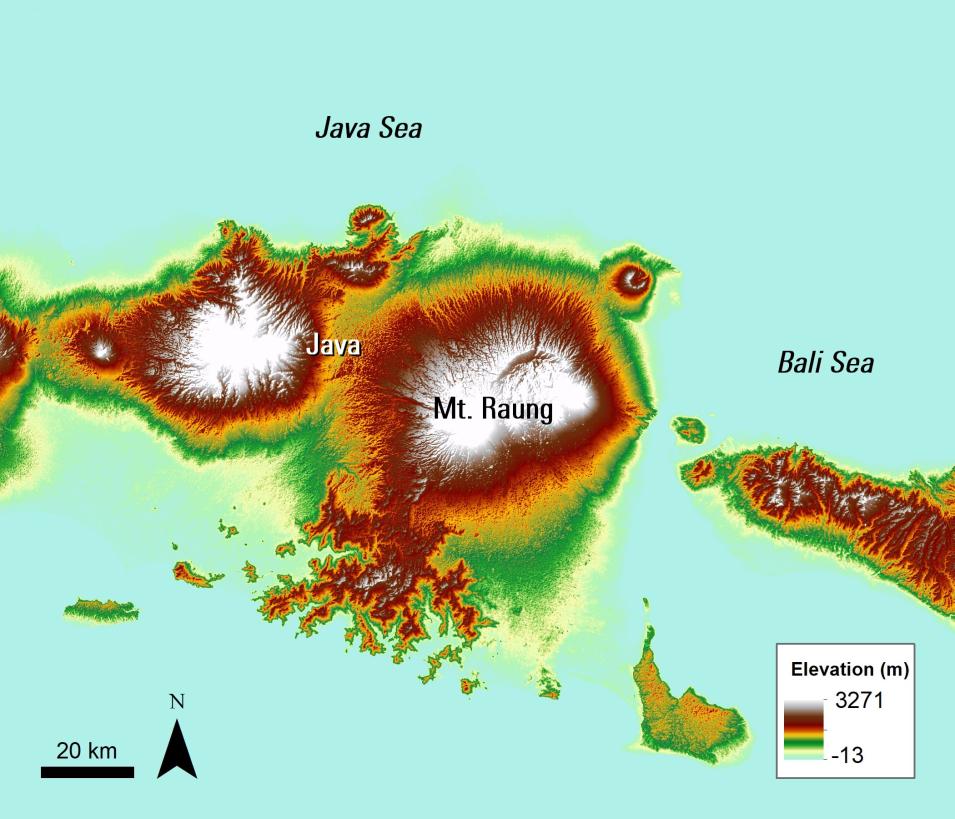Science Objectives
Laskin and others (2019) set out to study the distinct phenophases of understory vegetation in near real-time using in-situ field data, PlantCams time-lapse data over 45 plots, and Daily Land Surface Temperature (LST) data from the Moderate Resolution Imaging Spectroradiometer (MODIS) aboard the Aqua (MYD11A1) and Terra (MOD11A1) satellites. In this paper, "Advances in phenology are conserved across scale in present and future climates" published in Nature Climate Change, the researchers are looking at the Canada buffaloberry (Shepherdia canadensis), an essential food source for grizzly bears, in western North America during 2011 and 2012.
Instruments and Techniques Used
First, the authors conduct air temperature modeling to bridge the gap between canopy-top observations from MODIS data and understory air temperatures using in-situ data. Next, present-day phenology maps are produced by calculating developmental threshold temperatures and applying phenophase accumulated growing degree days to the raster stacks. Finally, the authors forecast what the phenology might look like in the years 2071–2100 by modifying the current phenology maps using a downscaled regional representative concentration pathway (RCP) 4.5 anomaly derived from the CMIP5 model ensemble. To take their research further, the authors then mask the data with a species-distribution model.
Major Findings
The authors found their maps successfully predicted the progression of the S. canadensis in 16 of their validation locations. Their maps forecasted a significant advance (13-day shift) in florescence, or flowering, and a 19-day advance in the development of fully ripe berries. The authors discovered that the rate of ripening increases with elevation and project that the subalpine regions of the study area will experience ripening 37 days earlier by the 2080s. They also predict an 8 percent decline in the range of the species in the study area but an increase in the availability of ripe berries during peak coverage. If these projections are correct, it could mean the grizzly bear population in the area will experience food deprivation prior to hibernation, as this would cause a large gap between the availability of these berries and the natural timing of grizzly bear hibernation. The authors confirmed their results with a growth-chamber warming experiment. They believe their framework is highly effective in observing stages of plant development in the understory and shows a strong link between air temperature and plant composition. The authors believe their study could be improved in estimating late-season phenophases by incorporating site moisture derived from MODIS thermal bands and chilling degree days.
References
Publication Reference
Laskin, D., McDermid, G., Nielsen, S., Marshall, D., Roberts, D., and Montaghi, A., 2019, Advances in phenology are conserved across scale in present and future climates: Nature Climate Change, v. 9, p. 419–425. doi:10.1038/s41558-019-0454-4
Image Reference
- Granule IDs:
- MOD11A1.A2012217.h10v03.006.2016115170205
- MOD11A1.A2012217.h10v04.006.2016115170126
- MOD11A1.A2012217.h11v03.006.2016115170124
- Data Citation:
- Wan, Z., S. Hook, G. Hulley. MOD11A1 MODIS/Terra Land Surface Temperature/Emissivity Daily L3 Global 1km SIN Grid V006. 2015, distributed by NASA EOSDIS Land Processes DAAC. doi:10.5067/MODIS/MOD11A1.006


